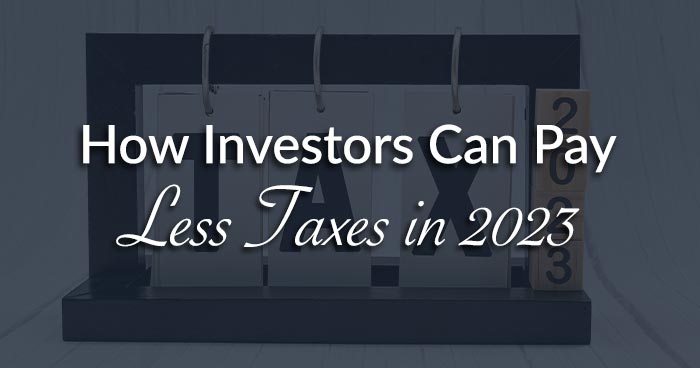Among the top New Year’s resolutions investors can make is to pay less in taxes. Without a doubt, taxes can be one of the biggest drains on realized investment returns.
Fortunately for holders of physical precious metals coins, rounds, and bars generate no tax consequences unless they are sold for a capital gain.
By contrast, stocks, bonds, exchange-traded funds, and savings accounts can throw off taxable distributions regardless of whether they are immediately reinvested.
After years of zero interest rate policy that rendered conventional cash instruments dead ends, savers are finally being rewarded with at least some nominal yield. The downside to higher-yielding money markets, certificates of deposit, bonds, and other debt instruments is higher taxes.
Interest-bearing financial products (other than municipal bonds) aren’t tax efficient.
Interest payments are taxed as ordinary income at the taxpayer’s top marginal rate.
After-tax returns on savings will never keep up with inflation. Perversely, higher nominal interest rates meant to quell inflation function as a tax hike on savers.
If yields on savings were 0% and inflation was running at 2%, then savers would simply suffer a 2% real loss and the government would get nothing more out of them.
But supposing that inflation averages 6% in 2023 (which may be optimistically low) and savers can get 4% yields on their cash, their real yield will be -2%. But since they will also have to pay taxes on their nominal returns, their after-tax real returns will be even worse than -2%.
Higher interest rates not only fail to offer inflation protection, but they impose one type of inflation tax that further hurts savers.
By contrast, the gold price tends to fully reflect accumulated inflation over time (though returns can deviate from the inflation rate in any given year). Instead of throwing off taxable interest payments, a gold coin accumulates and compounds value as the currency in which it is denominated depreciates.
Investors who want to protect their bullion from capital gains taxation when they sell can hold certain gold, silver, platinum, and palladium products within a tax-sheltered IRA.
The IRS mandates that gold held in an IRA be at least .995 pure (.999 or higher for silver). The agency created an exemption to also allow gold American Eagles, minted by the U.S. Mint, which are 22 karat purity (or .9167 pure).
Conventional banks and brokerages get paid handsomely for trading paper, so they limit their customers' choices.
You can take the exit and get control of your investment choices with a self-directed precious metals IRA. Simply choose an IRS-approved account custodian, buy your IRA-eligible bullion from a reputable dealer, and have it stored on your behalf in a secure vault.
When you are ready to take distributions, you have the option of selling for cash and receiving the proceeds or taking delivery of your physical precious metals.
For 2023, IRA contribution limits are $6,500 for individuals (a $500 increase from 2022). Those over age 50 can contribute an additional $1,000 for a total of $7,500.

About the Author:
Stefan Gleason is CEO of Money Metals Exchange, the company recently named "Best Overall Online Precious Metals Dealer" by Investopedia. A graduate of the University of Florida, Gleason is a seasoned business leader, investor, political strategist, and grassroots activist. Gleason has frequently appeared on national television networks such as CNN, FoxNews, and CNBC and in hundreds of publications such as the Wall Street Journal, TheStreet, and Seeking Alpha.





